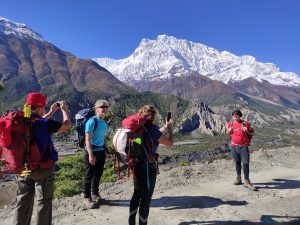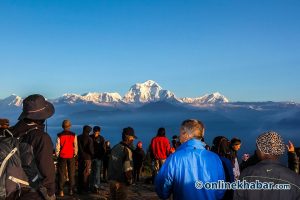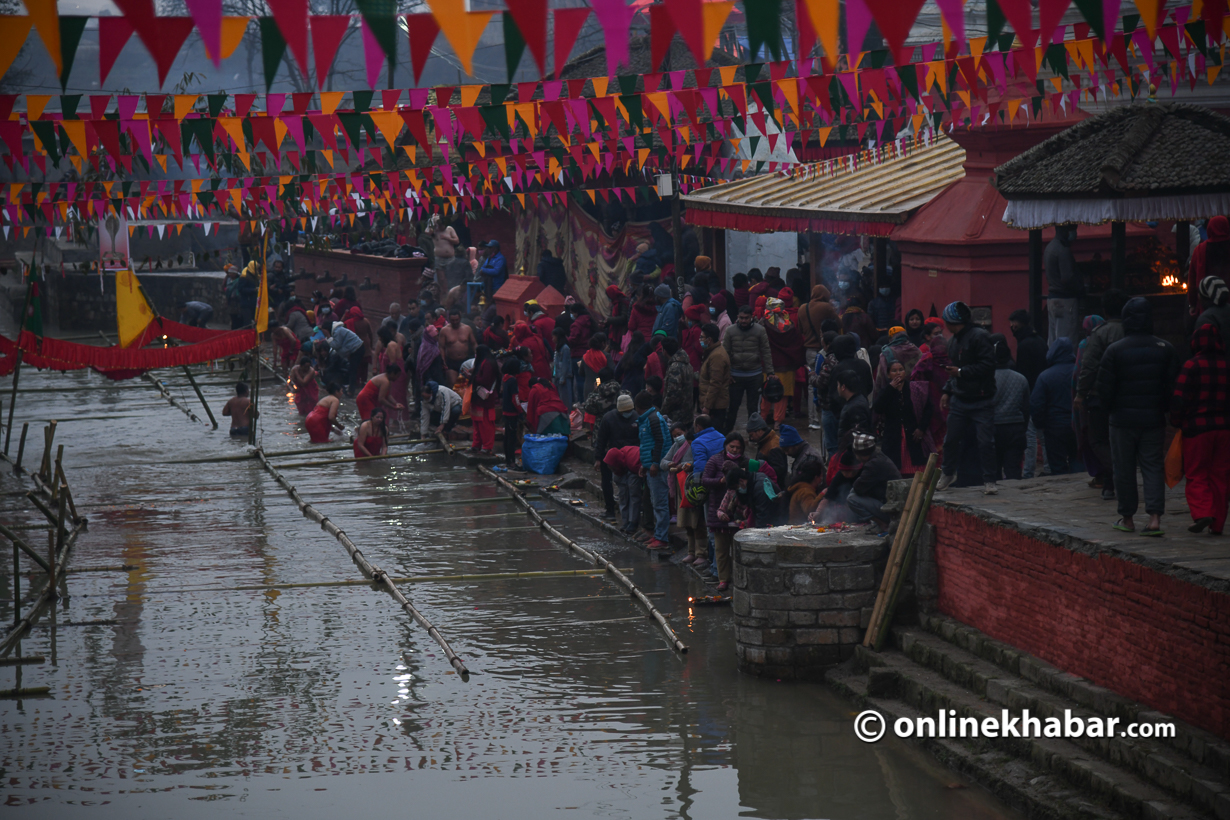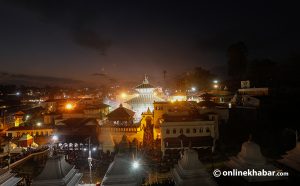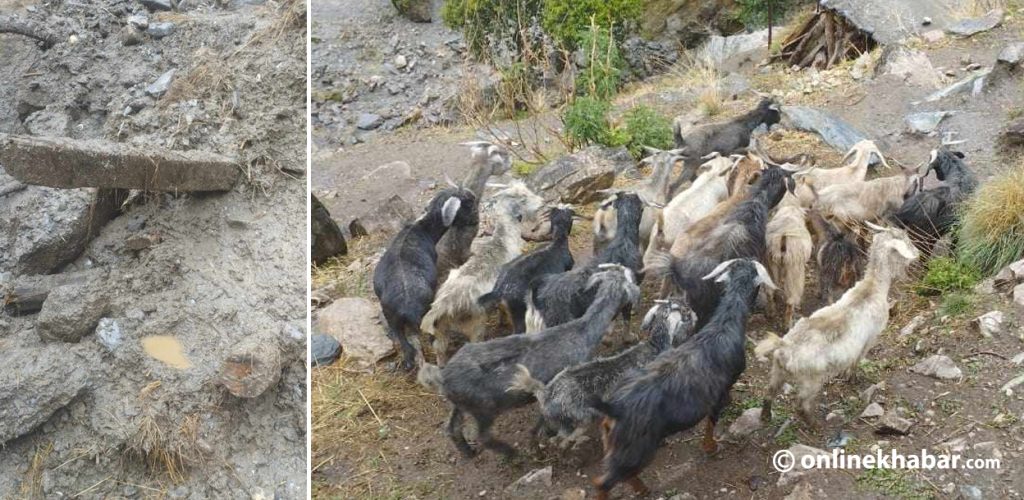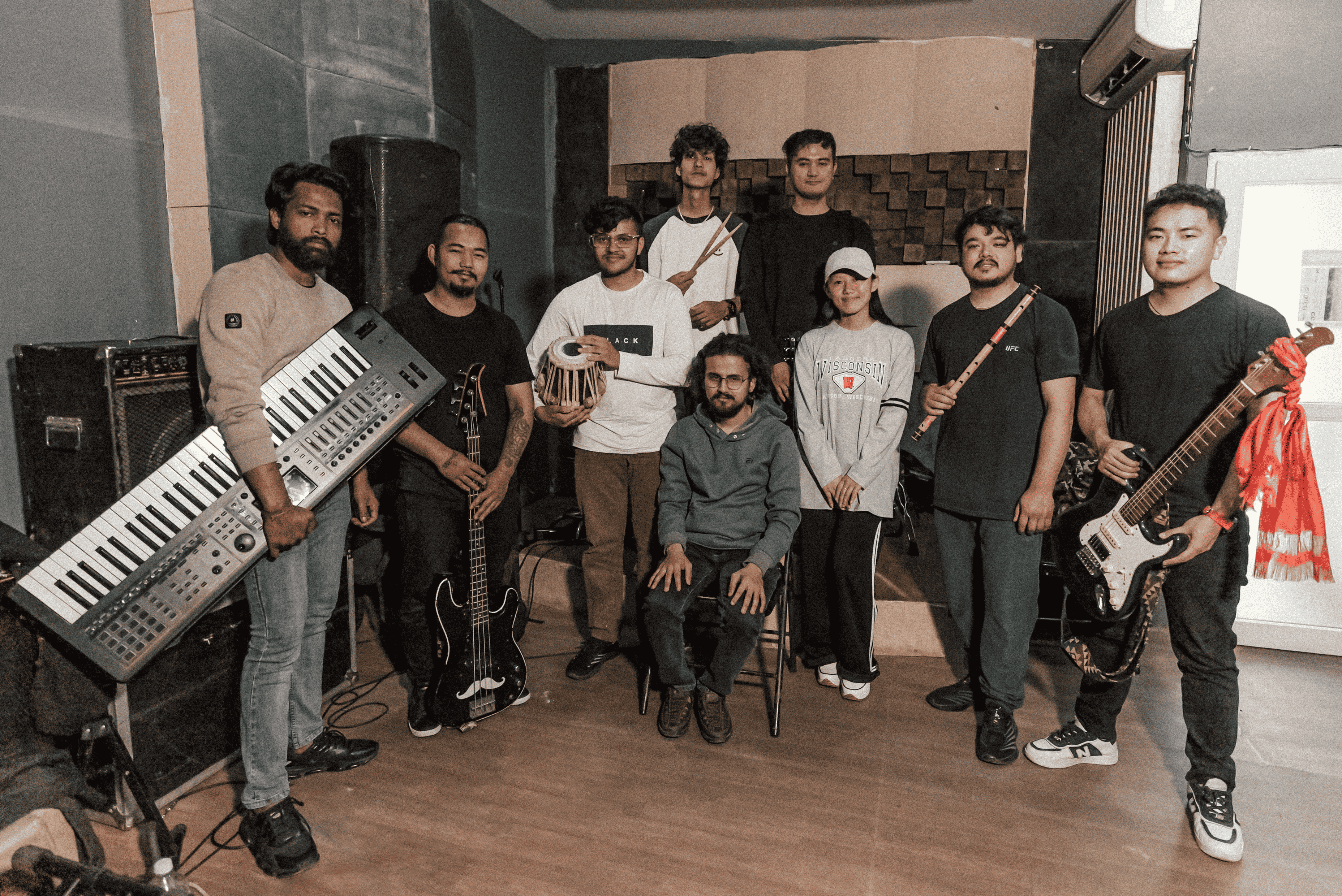
When Nepal was in between the Covid lockdowns, Sachin Dangi went out of Kathmandu with his friend and reached Chisapanigadhi in Makawanpur, some kilometres south of Kathmandu, taking their time to travel to different parts of the country in their free time. But, it was locked.
They almost returned thinking the opportunity to visit the historic site was lost, but they asked around and got the contact information of a priest there. “When he arrived, he took us on a tour of the gadhi (a kind of fort) and told some amazing stories of the Anglo-Nepal war, from where the enemy attacked and how gallantly the Nepali side fought,” shares Dangi.
“We then came back amazed and happy. Then, I started contemplating on how many stories could we unlock when we opened the gates of the gadhi.”
Dangi’s contemplation later became the motivation for him to start Saarang, a platform created by students to enhance and enrich the travel experiences of the [domestic and foreign] tourists with stories related to the landmarks including cultural, natural and historical heritage sites across Nepal.
In just 10 months of operation, Saarang has already put up 100 boards with their QR scans in various landmarks across Kathmandu valley. And soon they are making their mark outside the valley too. According to the team, it aims to bridge the gap in the tourism sector of Nepal where tour guides or guided tours are not available.
How does it work?
Saarang is a web platform designed and conceptualised to aid tourists in their visits to important landmarks. It has integrated its QR code in majorly 10×12 inch boards on the sites for people to scan.
![Screenshot taken from Saarang's website. [Note: Cropped for editorial purposes]](http://english.onlinekhabar.com/wp-content/uploads/2022/12/Saarang-Agni-Kund-Screenshot-1024x663.jpg)
The platform includes stories in text or audio format that anyone can access through their mobile phones, and get to know the landmarks they visit more closely. This enables the Saarang team to tell the stories in real time.
To break the language barrier and add value, the team has also integrated a tool that translates the stories into major languages of the world. Saarang claims this sets it apart from other websites.
Saarang boards are currently present at Budhanilakantha, Palanchok, Thamel, Dakshinkali, Janakpur and Lumbini. Tourists visiting these sites can simply just scan the QR code the team has put up in the landmarks and enjoy the stories on their websites. At Thamel and Lumbini, it has also kept a separate QR code to take the tourists on a guided tour, based on their location.
Users do not have to log in or create an account; it is easily available for all.
Getting the idea together
Registered as a private research company in February 2021, Saarang has collected and archived more than 100 stories from the locals, the authorities and the local historians. It is managed and run by four undergraduate business and IT students at King’s College during their after-college hours.

The main person behind the idea is Sachin Dangi (23), the CEO of Saarang. His colleagues are Diwakar Rizal (23), Sushant Gaire (23) and Ashish Katuwal (22). Dangi looks at product development and user experiences and Rizal is in charge of research product design. He also writes or compiles the stories. Gaire looks after board placements, their instalments and technology while Katuwal creates social media content.
Dangi shares that his teachers have also helped a lot to set it up.
“After I emailed my idea to my teachers, one of them told me that it was an idea worth working on and making a viable product. So, with his confidence and mentorship, we applied for Otharo, a six-month incubation programme of our college, and formulated the idea into today’s web-based application.”
When they started research to prepare for the platform, they first went to talk to the tourists. They found that they were facing the same problem as their experience at Chisapani, even in Kathmandu. They also learned it would aid those who are inquisitive and eager to learn about the stories behind the places but have always hesitated to ask people.
Within three to four months into the operation, Saarang added a board in Budhanilakantha and to its surprise, it got enough hits within the first week. So far, Saarang has got some 8,000 hits from the single board. “The number is overwhelming.”
Dangi shares an anecdote. “There was a mother and a son who was staying in line to enter the temple. To the bored son, the mother asked him to go scan the QR code and listen to the stories while they waited. A friend of mine was just behind them and she called me up and shared the experience with me; it was heart-warming to know.”
Still some challenges

So far, the team has collected stories majorly from the authorities. “Many authorities we collaborated with [for example, in Lumbini and Janakpur] already had enough stories in their collection. So with their permission, we integrated the stories into our platform.” But, it is not always the case.
As per Dangi, there are many stories that clash with each other and the communities express their disapproval of the stories shared by others. Fact-checking them or getting the communities to agree on one has posed some problems.
However, the innovators say, more than communities, the painful bureaucratic process in the public offices has been their headache. “We call up the reception of the offices to approach the officials. But it has been a waiting game. It is really a hassle when we have to go to the same office four or five times to meet anyone and pass the proposal. A few proposals have been collecting dust for months now.”
It is also hard to work without a connection and some officials question their work just because they are students, according to Dangi.
Rizal adds, “They have turned us back citing festivals, local elections, year-ends and parliamentary elections. It is demotivating at the least.”
But, Dangi finds it ironic, “They are the same people who complain that the youth of this country are going abroad and not working here. Yet when youth like us go knocking on their doors, they shut it in our face.”

But when they got through, he stresses, that platform has been useful. “We were previously worried that there would be a backlash from the tour guides in Lumbini. But, we found that the guides have been using the stories to their advantage.”
The next pin
For Saarang, the next stop is Pokhara. With plans already in place, within the next month, the team plans to extend its presence in the country’s tourism capital.
Apart from that, the team also is gearing towards launching its app. “So far, we have had to rely on the free internet facilities available or the cellular data as it is a web-based app. But, soon, we are launching the mobile app, hopefully in January 2023, and overcoming the access gap too.”
He explains further, “With our mobile app, the tourists will be able to scan and enjoy the stories, guided tour and also get the top recommendation of the nearest eateries and recreations to explore and personalise their experience further.”
So far, the team’s revenue has been generated from the boards installed. But, with the integration, it hopes to generate more revenue from other platforms too.
The Saarang team is also looking into integrating podcasts and other videos into the platform.
If anyone wants to collaborate or wants to expand the platform in their area, the team says it is ready to collaborate.






